Evidence
Geography, Ancient Historians, Archaeology & The Physical Attributes of Jabal Maqla
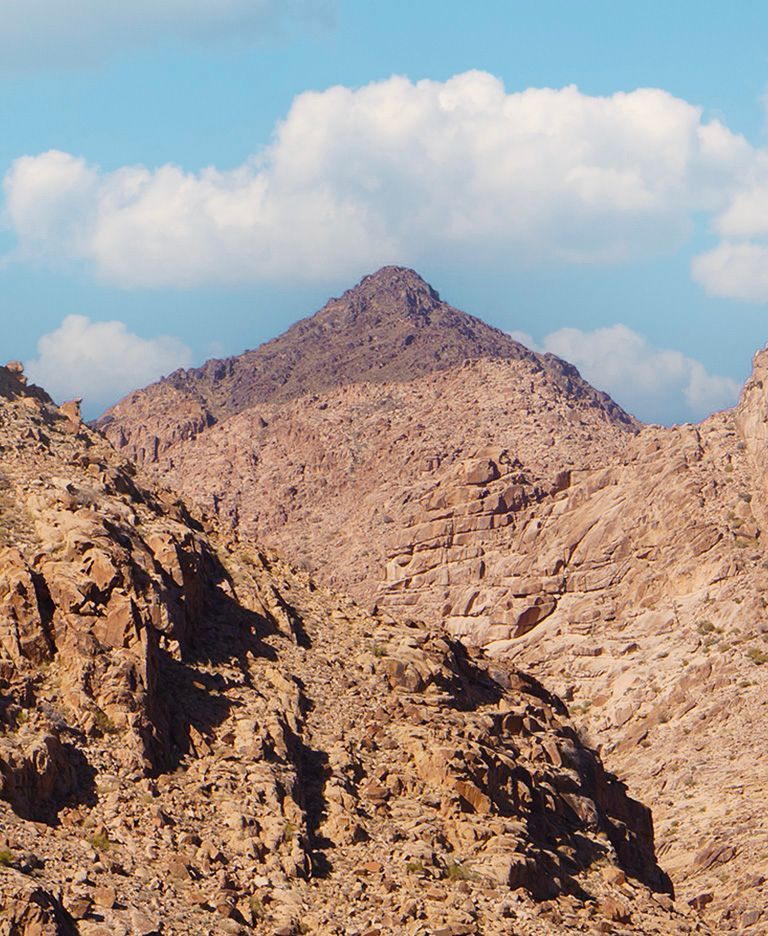
There are a handful of mountains that have been proposed as possible locations of Mount Sinai. Two of them are foremost. One is the traditional mountain in the Sinai Peninsula, which has been believed to be Mount Sinai for centuries and is the location of St. Catherine's Monastery, the oldest continually operating monastery in the world. The other is the more recently rediscovered mountain in the NW corner of Saudi Arabia called Jabal Maqla. Some recent explorers have mistakenly called this one Jabal Lawz, which is actually a peak slightly to the north.
The traditional mountain first appeared in the historical record as Mount Sinai after the onset of the monastic movement in 4th century Egypt. Saint Catherine's monastery was later built in the 6th century at the order of Byzantine Emperor Justinian I. It's geographic location in the Sinai Peninsula does not permit a Red Sea crossing that fits the Exodus narrative. It's location to the west of the Sea of Aqaba is difficult to comport with the established location of ancient Midian, the land to which Moses fled and where he encountered God at the burning bush. It also lacks archeological evidence of an ancient Israelite camp and the descriptive marks of the mountain, such as a significant cave or evidence of a flowing stream.
While there is much to be admired about the traditional site including all the work and prayers offered by Orthodox Christians over the centuries at Saint Catherine's and the many historically valuable ancient manuscripts, icons and relics located there, the peak lacks the evidence required to fit the Exodus narrative. The lack of evidence to align the Exodus narrative with the traditional Mount Sinai in the Sinai Peninsula has arguably contributed to western skepticism and unbelief among Christians and perhaps among adherents in each of the Abrahamic faiths.
Jabal Maqla (which in English means "Burnt Mountain"), on the other hand, better fits the biblical Exodus narrative. The combined evidence based upon its geographical location, ancient historical references, the surrounding archeology and the bare attributes of the mountain make a persuasive case for its identify as the biblical Mount Sinai.
Geography
Ancient Midian
When Moses fled Egypt, he settled in Midian. Ancient Midian corresponds to modern day NW Saudi Arabia and particularly the oasis towns of Al Bad'a and Magna. It includes the entire coastal plain where The Line city is being built as the most ambitious of the NEOM projects. It was in Midian where Moses stayed with Jethro and married Zipporah and in the wilderness near Midian where Moses experienced the burning bush at Mount Sinai. If the location of Midian is established, then the location of Mount Sinai would be in its vicinity.
Exodus 3:1 says, “Now Moses was tending the flock of his father-in-law, the priest of Midian, and he led the flock to the far side of the desert and came to Horeb, the mountain of God.”
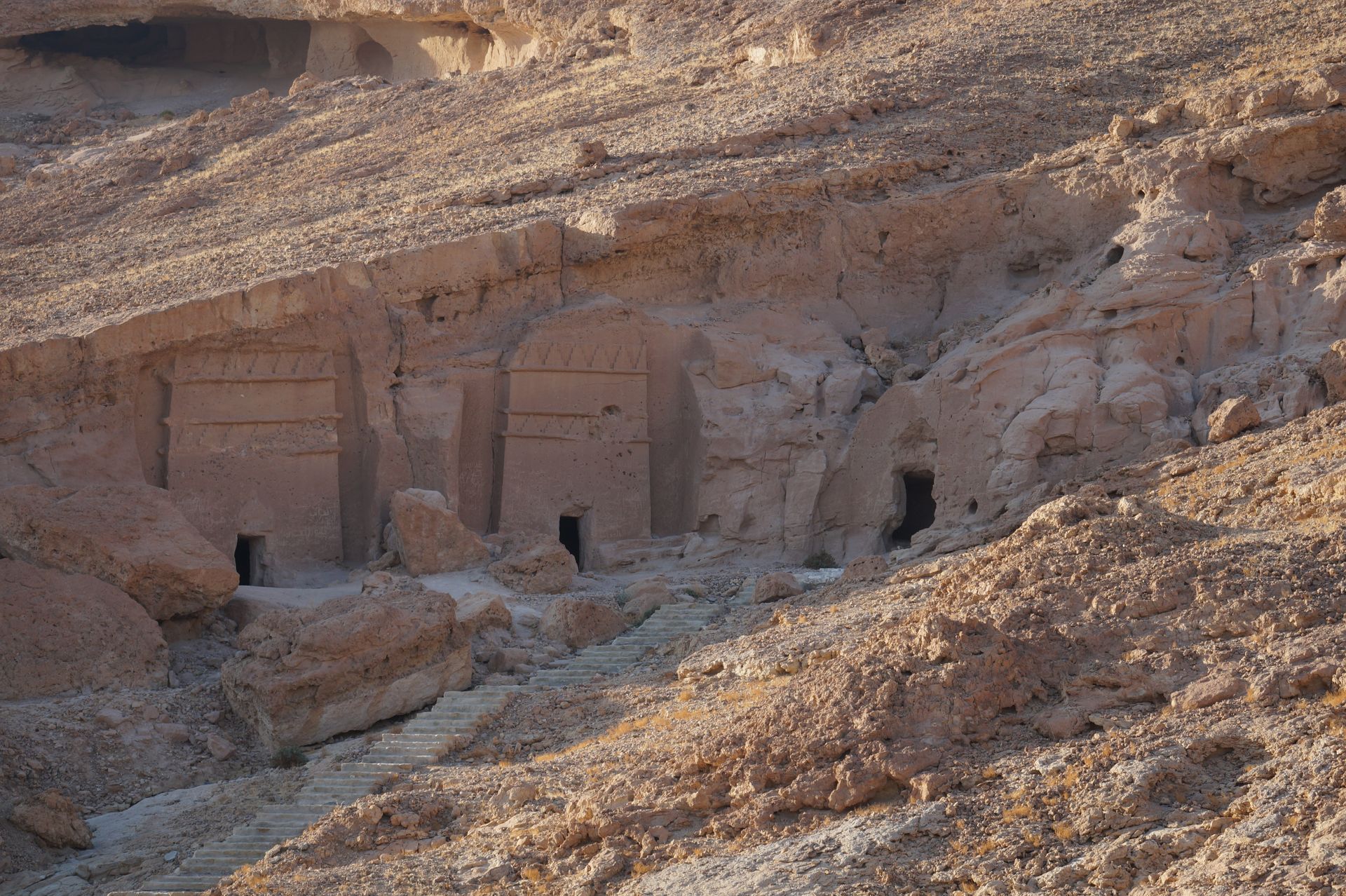
Red Sea Crossing
Most maps of the route of the Exodus that include the traditional site exclude entirely a Red Sea crossing that fits the story in the Exodus.
Exodus 14:21-22 describes the crossing this way: “Then Moses stretched out this hand over the sea, and all that night the LORD drove the sea back with a strong east wind and turned it into dry land. The waters were divided, and the Israelites went through the sea on dry ground, with a wall of water on their right and on their left.”
Pharaoh and his chariots and horsemen then followed after Israel into the sea. After this “Moses stretched out his hand over the sea, and at daybreak the sea went back to its place. The Egyptians were fleeing toward it, and the LORD swept them into the sea. The water flowed back and covered the chariots and horsemen – the entire army of Pharaoh that had followed the Israelites into the sea. Not one of them survived. But the Israelites went through the sea on dry ground, with a wall of water on their right and on their left.”
If Mount Sinai is near Midian and therefore east of the Sea of Aqaba, then what we know as the Red Sea crossing would fit the biblical narrative as a great miracle. Currently there are two proposed Red Sea crossing sites at the Sea of Aqaba. One is at the Strait of Tiran and the other begins from Nuweibaa in Egypt.
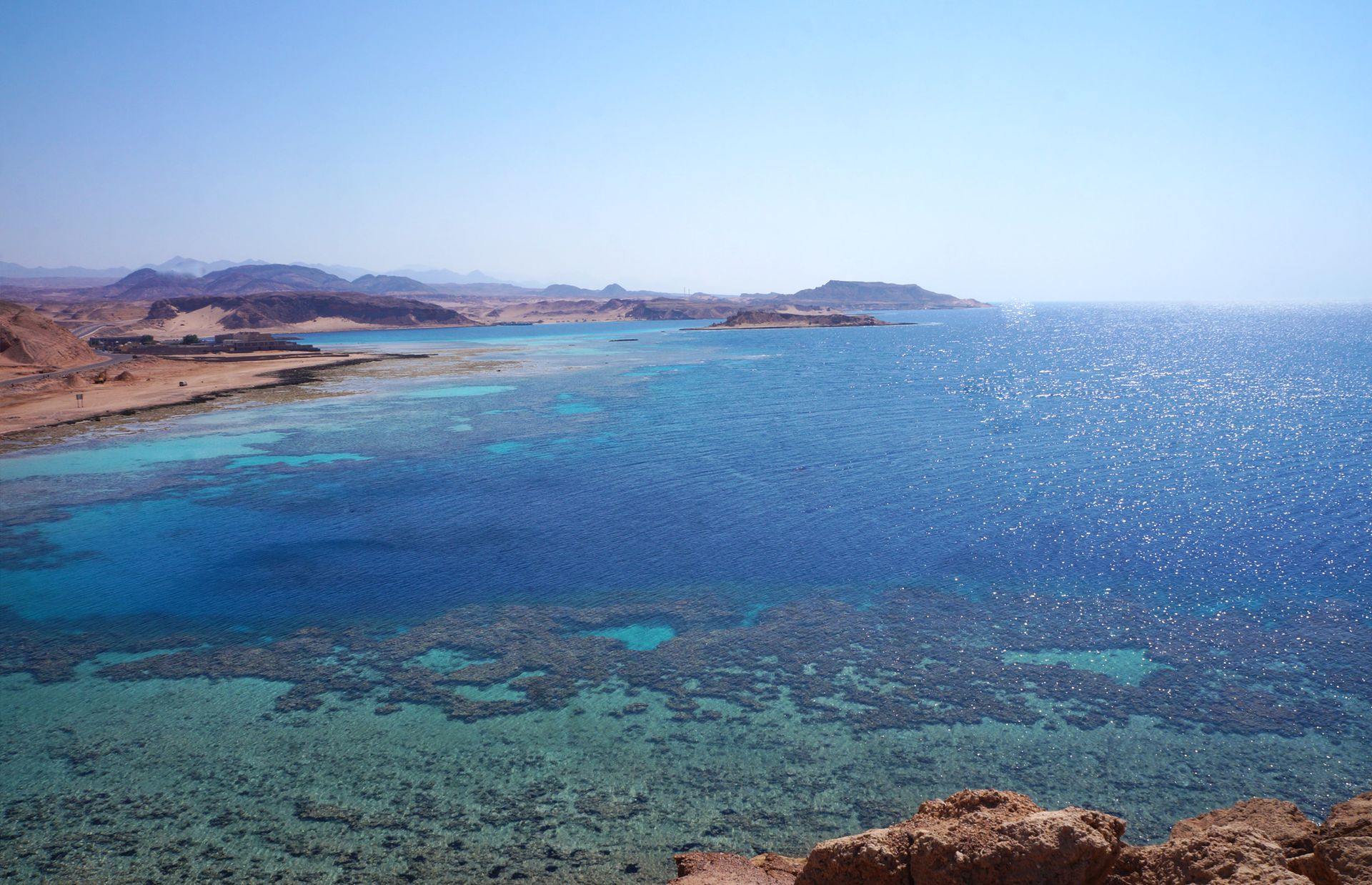
Ancient Historical References
Ancient Jewish, Christian, Roman and Islamic historians and geographers locate Midian west of the Sea of Aqaba in Arabia and Mount Sinai as one of the highest peaks in Midian.
Once we establish the location of ancient Midian, we can make more sense of ancient historical references regarding Mount Sinai's location. In his book Mount Sinai in Arabia, author and speaker Joel Richardson compiles a list of Jewish, Christian, Islamic and Roman references to Midian and Mount Sinai, which establish their locations in NW Saudi Arabia well before the first record of any claim that Mount Sinai was outside of Midian in what is now known as the Sinai Peninsula. Several of these references point out that Mount Sinai is one of the tallest peaks in Midian. If we rely on these witnesses, this should quickly narrow down any search to the tallest peaks in or near ancient Midian.
Jewish References
Septuagint
The Septuagint was the first translation of the Hebrew bible into another language. The ancient Greek translation of the Bible was the common Bible of New Testament times. The seventy Jewish scholars who translated the Septuagint consistently translated Midian as either “Madian” or “Madiam.”
Philo of Alexandria
In his commentary on Exodus, Philo describes Mount Sinai by saying it was “the loftiest and most sacred mountain in that district.”
Josephus
In his
Antiquities of the Jews, Josephus said: “Moses ascended up to Mount Sinai, which is the highest of all the mountains that are in that country.”
Christian References
Saint Paul
Saint Paul indicated that he travelled to Mount Sinai after his conversion experience in the epistle of Galatians. In Galatians 1:15-17, he said he “did not consult any man” but “went immediately into Arabia.” Later he associates Arabia directly with Mount Sinai in Galatians 4:25. In ancient times Arabia was understood to be the Arabian Peninusla, that is today Saudi Arabia, Yemen, Oman, etc. While it could have included places such as the modern Sinai Peninsula and parts of Syria, when unqualified, "Arabia" was generally understood to be east and south of the land of Israel.
Demetrius
Demetrius was a 3rd century bishop from Alexandria. He was quoted by Eusebius, the 4th century church historian and bishop of Caesarea, in his work Preparation Evangelica. While speaking of Moses and Zipporah Demetrius identifies Midian with city Madiam, which is located in NW Saudi Arabia. He says "And they dwelt in the city Madiam, which was called from one of the sons of Abraham."
Eusebius
In a work called The Onomasticon, Eusebius says that "[the city of Madiam] lies beyond Arabia to the south in the desert of the Saracens, east of the Red Sea. From this they are called Midianites, and it is now called Madiam." Then regarding "Mount Horeb," Eusebius identifies it as the "mountain of God in the land of [Madiam]..." It is "near Mount Sinai beyond Arabia in the desert."
Islamic References
Muhammad Ibn Ishaq
Muhammad Ibn Ishaq was an eighth century Muslim historian. He said: “The people of Madyan are the descendants of Madyan, son of Midyan, son of Ibrahim. Shuaib was the son of Mikil bin Yashjur. In the Syrian language, his name was Yathrun (Jethro).”
Ahmad al-Yaqubi
Ahmad al-Yaqubi was a late 9th century Muslim geographer. He referred to the modern town of Al-Bad as Midian saying: “Midian is a populous, ancient town with many springs, rivers and an abundance of gardens, orchards and plan trees inhabited by different ethnic groups.”
Al-Sharif al-Idisri
Al-Sarif al-Idisri was a twelfth century Muslim geographer. He said, “at the coast of Quzlum Sea, lies the city of Midian, which is larger than Tabuk. Inside the town was the well from which Moses (Peace be upon him) extracted water for the livestock of Shu’aib [Jethro]… Midian was named after the tribe of Shu’aib.”
Roman Reference
Claudius Ptolemy
Claudius Ptolemy was a famous Roman mathematician, scientist and geographer who lived in Egypt in the 2nd century AD. In his book The Geography, Claudius maps out with coordinates the entire Roman Empire. For our purposes, what is significant about his work is that he places two cities that he calls Madiama and Modiama, name variations for Midian, east of the Sea of Aqaba. Consequently, subsequent maps based on his work have also placed these same Midianite cities east of the Sea of Aqaba.
Archeology & Attributes
Jabal Maqla has a prominent cave on face of the mountain overlooking the Eastern Plain. I Kings 19 says that Elijah travelled 40 days and nights “until he reached Horeb, the mountain of God. There he went into a cave and spent the night.
Jabal Maqla has a stream-bed that flows from one of the peaks to the base of the mountain next to the Altar of Moses. After the Golden Calf incident, Moses crushed the calf “and ground it to powder as find as dust and threw the dust into a stream that flowed down the mountain.”
There is a wide Eastern Plain that stretches from the base of the east side of the mountain, which would have sufficed for the large encampment of Israel.
Just above Elijah’s Cave, there is a sizable Mountain Plateau that stretches out for some distance before the mountain rises to its peaks. This corresponds with Exodus 24 where Moses, Aaron, Nadab and Abihu and 70 Elders ascended the mountain and “saw the God of Israel.” Then Moses and Joshua ascended even further (to the peaks) to receive the tablets of stone.
Jabal Maqla has a unique Blackened Peak that many have speculated could be remains of when God descended to the mountain in fire.
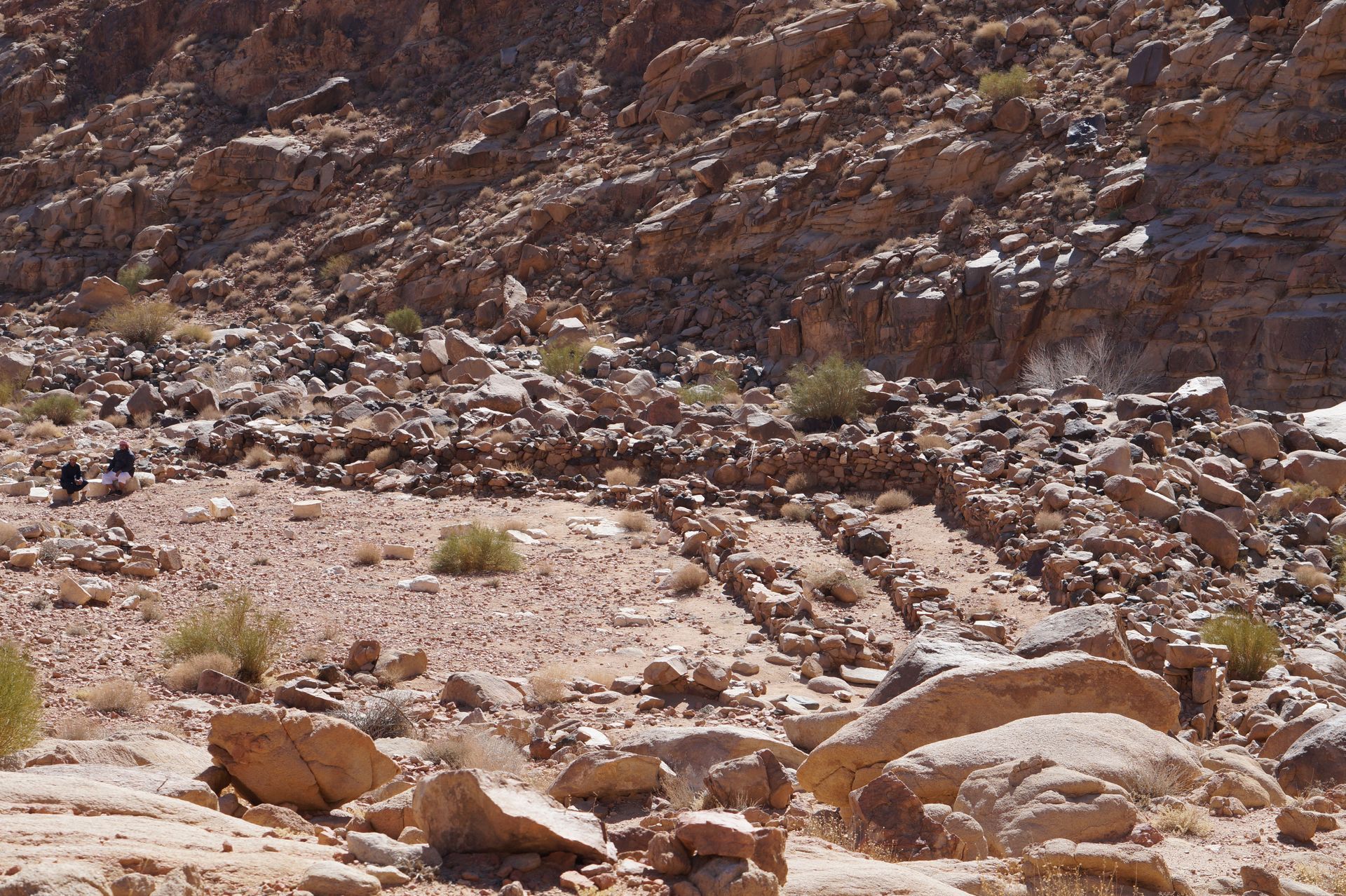
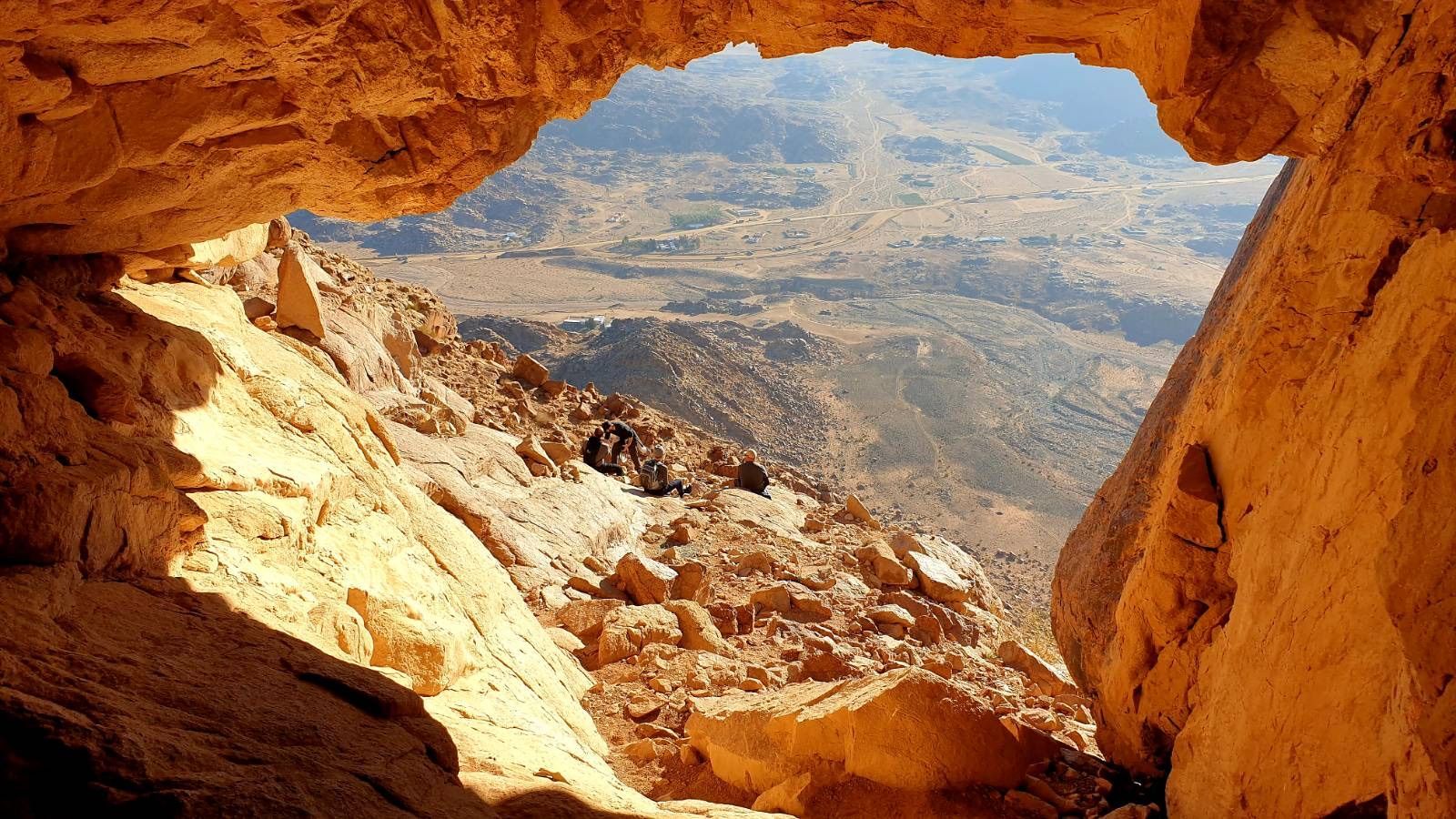
Tours in Saudi Arabia and Jordan from The Red Sea to the Jordan River. Climb the Real Mount Sinai. See the Split Rock.
Explore Ancient Petra, Wadi Rum & Bethany by the Jordan.